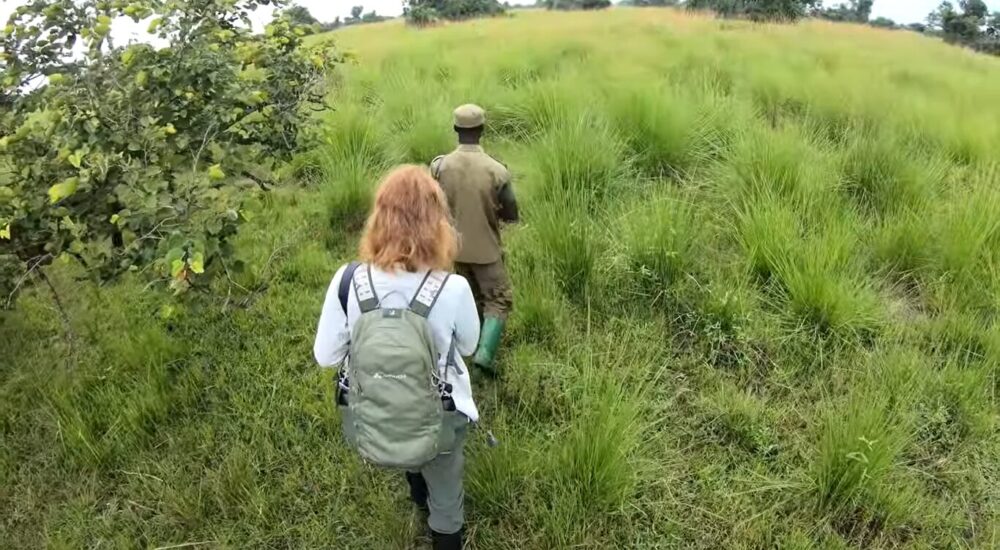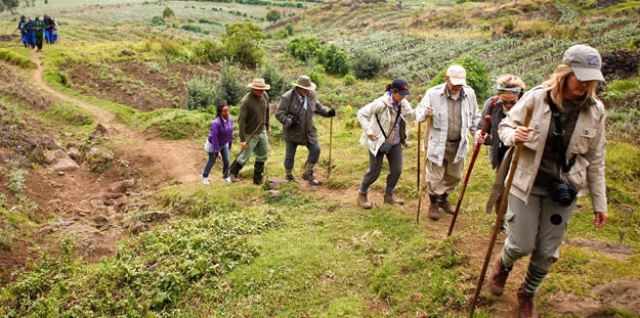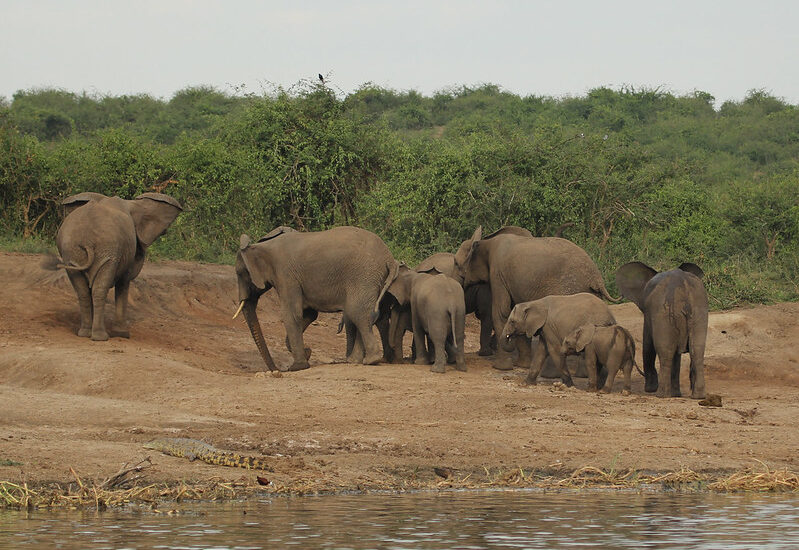Uganda, famously known as the Pearl of Africa, offers a diverse range of safari experiences,…
Mount Kilimanjaro Deaths
Mount Kilimanjaro Deaths, Mount Kilimanjaro looks out over the plains of East Africa and is a great example of how amazing nature is. As of now, Mount Kilimanjaro is the tallest mountain in Africa, standing 5,895 meters (19,341 feet) above sea level. This dormant stratovolcano has long captivated hikers, mountain climbers, and adventurers from around the world. It dominates the scenery of northern Tanzania. When you see its snowy peak against the tropical background, it’s a strange and amazing sight.
Kilimanjaro is definitely beautiful, but it is also a very dangerous mountain. This takes us to an important part of mountaineering: knowing the risks that come with climbing at high elevations.
Sign for Mount Kilimanjaro safety
There is a chance of dying when you climb almost any big mountain, and Mount Kilimanjaro is no different. As of recently, data show that about ten climbers die each year on the mountain. Right now, we only know how many climbers were declared dead at the scene, so we rounded this number up. Due to the size of Kilimanjaro, it is impossible to know if people from the area died and no one knew. Six to seven hikers die every year on this famous mountain.
How many people die on Kilimanjaro every year?
About 10 to 15 people die every year while trying to climb Mount Kilimanjaro by all accounts. However, this number can change every year depending on things like the weather, the number of climbers, and other outside situations. The death rate for all climbers was 13.6 per 100,000, according to some reports.
Many people who die on Mount Kilimanjaro do so because they get altitude sickness, especially Acute Mountain Sickness (AMS), High Altitude Pulmonary Edema (HAPE), and High Altitude Cerebral Edema (HACE). Falls, bad weather, and chronic health problems are some of the other reasons.
It’s important to remember that between 35,000 and 40,000 people climb Kilimanjaro every year, so the number of deaths compared to successful climbs is pretty low. But the number also shows how important it is to get ready, get used to the altitude, and have experienced guides on such a trip.
Where do most people die on Mount Kilimanjaro?
The phrase “Death Zone.” The main reason for this is that the air pressure and oxygen level are so low at some elevations that they are not suitable for human life, even with extra oxygen. This type of zone can be found on Mount Everest, K2, and other 8,000-meter peaks.
Mount Kilimanjaro’s peak is 5,895 meters (19,341 feet) above sea level, so it doesn’t have a “Death Zone” in the sense that is usually used in high-altitude climbing. But that doesn’t mean there aren’t any risks of death. Some people can get High Altitude Sickness at elevations as low as 2,500 meters. This includes Acute Mountain Sickness (AMS), High Altitude Pulmonary Edema (HAPE), and High Altitude Cerebral Edema (HACE).
Because Kilimanjaro is so high, hikers can and do get very sick from the altitude, especially if they go up too fast without giving their bodies time to adjust. This risk is bigger at the higher camps, like Barafu Campsite, which is about 6-7 hours from the top of Uhuru. To safely climb Kilimanjaro, you need to get used to the altitude, stay hydrated, and know how to spot the early signs of altitude sickness.
In what ways do most people die on Mount Kilimanjaro?
Help with the rescue on Kilimanjaro
Acute Mountain Sickness
Someone who climbs Mount Kilimanjaro or any other high mountain often and well knows that they could get acute mountain sickness (AMS), which is also called altitude sickness.
When your body doesn’t properly acclimate or struggles to acclimate fast enough as you rise, you can get altitude sickness. At higher elevations, there is less oxygen in the air, so your body needs time to get used to it and make more red blood cells to make up for it.
If you think you might be getting altitude sickness, you should tell your guides right away so that they can take the right safety measures and tell you how to continue. As you go above 10,000 feet, many people will start to feel mild AMS symptoms. At this point, it’s important to go slower and stay hydrated to keep the symptoms from getting worse.
Some of the signs are headaches, feeling sick, being tired, feeling dizzy, having trouble breathing, and losing your appetite. Symptoms are usually worse at night, which can make it hard to sleep. Mild AMS can be painful, but the signs and symptoms should go away as your body gets used to them.
If you have mild AMS, you might get severe headaches, feel sick, throw up, have trouble walking, and have trouble breathing. In the event that you experience any of these signs, you must quickly drop to a lower elevation and get professional medical help. You will need to turn around before you can’t walk on your own because ataxia makes it hard to coordinate your movements. Going down to a lower elevation will make the symptoms a lot better.
AMS that is very bad is very dangerous and can kill you. AMS signs that are very bad include shortness of breath at rest, mental decline, not being able to walk, and fluid buildup in the lungs. If you have severe AMS, you must descend right away or you will die.
High Altitude Pulmonary Edema (HAPE) and High Altitude Cerebral Edema (HACE) are two very bad diseases that can happen because of severe AMS. In these serious cases, it is very important to descend right away and then be evacuated to a medical center.
Rocks and falling things hitting you
When climbing Kilimanjaro, most of the paths are safe, but on the western side, rocks can fall on you and kill you. Avoid the Western Breach Route if you want to stay safe. The other ways don’t have any rock falls. Also, people often trip and fall on sharp rocks.
A heart attack
Kilimanjaro is a very difficult mountain to climb, so make sure you talk to your doctor about your health before you go to make sure you’re not at risk of having a heart attack.
Being too cold
On Kilimanjaro, especially at higher elevations, the temperature can drop by a lot. If a climber doesn’t have the right clothes, being out in the cold for a long time can cause hypothermia.
The Weather
Mount Kilimanjaro usually has nice weather from June to October, which is the dry season. But sometimes it can be really bad. Because of this, climbing during the wet season (March to June) is usually not a good idea because it’s harder to see and the hills are more slippery. Climbers will have a “uphill climb” if they plan their trips during this time because of rockfalls, higher temperatures, and other things that could be dangerous.
How to keep people from dying on Mount Kilimanjaro
On Mount Kilimanjaro or any other big mountain, you need to be ready, know what you’re doing, and pay attention to avoid dying. To make your trip up Kilimanjaro safer, here are some techniques and tips:
1. The Right Way to Acclimate
– Choose longer routes that give you more time to get used to the altitude. For many climbers, longer routes like the Lemosho or Machame are better because they give them more time to get used to the altitude. Follow the rule of “climb high, sleep low.” That is, you go up to a higher elevation during the day and down to a lower elevation at night. This helps with getting used to the new environment.
2. Know what altitude sickness is and how to treat it
– Know what Acute Mountain Sickness (AMS), High Altitude Pulmonary Edema (HAPE), and High Altitude Cerebral Edema (HACE) look like.
– If signs show up, don’t go any higher until they go away. If they get worse, you should go down right away. – Acetazolamide (Diamox) and other medicines can be used to avoid AMS, but you should talk to a doctor before taking any medicine.
3. Fitness for life
– Get ready for the climb months ahead of time. Building up your strength and cardiovascular fitness, as well as hiking at higher elevations if you can, will help your body get ready.
4. Getting enough food and water
Be sure to drink lots of water to stay refreshed. Dehydration can make the effects of mountain sickness worse. To keep your energy up, eat a healthy diet that is high in carbs.
5. Clothes and gear
– Dress for the weather by putting on clothes that you can take off or add to as the temperature changes.
– To avoid blisters and other foot problems, make sure you have good climbing boots that have been worn in.
6. Don’t drink or smoke while hiking Kili
– Both can make the affects of high altitude worse and make it harder for your body to adjust.
7. Know how the weather works
– The weather on Kilimanjaro can change very quickly. At higher elevations, it’s important to be ready for rain, cold, and even snow.
8. Check-ups for health
– Make sure you are healthy enough to climb by seeing a doctor before the trip.
– If you can, you might want to take a high-altitude fitness test.
9. Be kind to the mountain
Always keep in mind that getting to the top isn’t necessary. It is required that you return safely. There’s no reason not to turn back if things get too hard or health problems show up.
On any mountain hike, safety should be the most important thing. Climbers can greatly lower the risks of hiking Mount Kilimanjaro or even dying if they take the right measures and get ready.
Ways to climb Mount Kilimanjaro
The Machame Route
The most well-known way up Mount Kilimanjaro is the Machame route. The trail leads to beautiful views, enough time to get used to the altitude, and a moderately difficult hike over the course of six to seven days. The data shows that more than 35% of hikers use this path. Camping is allowed on this road, which makes sure that hiking trips are real. Along this trail, you’ll see well-known sights like the Lava Tower and Shira Plateau.
As the path winds through ridges and valleys, it rewards hikers with stunning views. This gives hikers the amount of difficulty they want. The trail starts on the southern side and goes through the southern ice field to get to the top.
The Lemosho Route
One of the most beautiful tracks on the mountain is this one. It’s a pretty level walk that goes across the Shira plateau. On top of that, the trail offers unique hiking experiences before the Macheme way. The Lemosho route and the Machame route share a road. It’s not very old, but it’s better than machame in many ways. This path starts in the western part of the mountain and goes through some of Kilimanjaro’s more remote areas. As you walk through the rain forest, you might see black and white colobus monkeys, blue monkeys, and many kinds of birds.
Route of the Northern Circuit
The northern route is the newest on the mountain, but some say it is also the best. It has the best parts of all the other routes on the mountain. The path has beautiful views, unique hikes, a good amount of difficulty, and chances to see wildlife. The path tracks the Lemosho path for a while before going south at Kibo. This path is almost empty. The campsites are quiet and offer peaceful mountain times.
It takes longer than the other trails, but you get to spend more time on the mountain. On the walk, you can see some beautiful sights, such as the Shira Plateau, Kibo Peak, and Koko Peak.
The Marangu road
The Marangau route is the longest and most well-known trail on the mountain. It is also known as the “Coca Cola route.” This is Kilimanjaro’s most famous route because it has huts where people can stay. To get to the different camps, this trail goes up slowly but steadily. But the climb to the last camp is difficult; it’s a 1-kilometer walk up and down.
This path to the top of the mountain takes 5 days, so hikers with little time like to use it. On the other hand, this doesn’t give you much time to get used to the altitude. This is the main reason why more people fail to reach the summit than on any other way. Please remember that as you make plans for your Kilimanjaro hike.
On the Marangau road, the path goes up and down the same way. On the way up and down, trekkers will see the same scenery. This also makes cars go both ways, which can make things too crowded.
The Rongai road
The Rongai path on Mount Kilimanjaro shows what real wilderness looks like. This is good for hikers who like to be alone or with fewer other people on the mountain. It begins in the northeastern part of the mountain, close to the border between Kenya and Tanzania. The route is the least traveled because it is so far away, but it offers peaceful moments during the trip. For the last push to the top, the track meets up with the Marangau route.
Hikers often have the road all to themselves for hours or even days at a time. We love the trail even more because of this. Because it starts on the northern side of Kilimanjaro, the trail gets the least amount of rain and is the cleanest. This means that you can walk all year long. Storms tend to stay on the southern side during the wet seasons. You might see wild animals like colobus monkeys. Along the way, there are a number of places to camp.
Tours and walks through Nyungwe Forest National Park.
Hiking trips and nature walks in Rwanda’s Nyungwe Forest National Park are meant to let people explore the area on foot with the help of a guide. Nature walks happen on a number of paths throughout the park. During the walks, you might see a lot of monkeys, other animals, birds, and bird species.
There are nature trails and hiking trails in Nyungwe Forest National Park.
Going on a trek with primates in Nyungwe Forest National Park.
In Nyungwe Forest National Park, you can do more than just visit communities. You can also go monkey climbing. Monkey trekking is a fun way for visitors to see most of the park’s monkeys in their native environment. When people go monkey climbing, they might see l’hoest monkeys, blue monkeys, crowned monkeys, red-tailed monkeys, Dent’s Mona monkeys, black and white colobus monkeys, vervet monkeys, owl-faced monkeys, and crowned monkeys.


